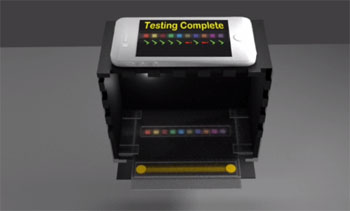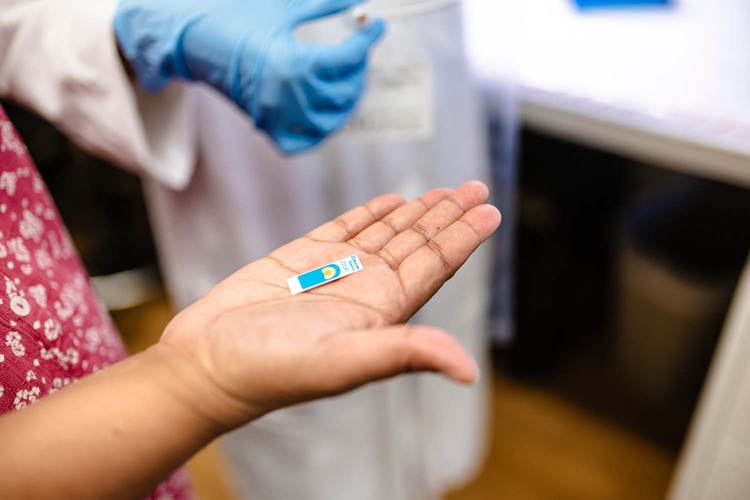Simple Black Box Turns a Smartphone into a Home Diagnostics Lab
By LabMedica International staff writers
Posted on 31 May 2016
An innovative use of the smartphone camera may allow individuals to skip visits to the doctor or clinic by enabling the performance of sophisticated blood or urine tests at home.Posted on 31 May 2016
Dipstick assays traditionally suffer from user error due to imprecise sample delivery, inaccurate readout timing, and uncontrolled lighting conditions. To prevent these types of errors innovators at Stanford University (Palo Alto, CA, USA) have developed a novel system for in-home testing. The system for dipstick urinalysis comprises a reusable manifold and companion software.

Image: The black box is part of an experimental urinalysis testing system meant to enable a smartphone camera to capture video that accurately analyzes color changes in a standard paper dipstick in order to detect conditions of medical interest (Photo courtesy of Stanford University).
The all-acrylic manifold is reusable, reliable, and low in cost. Clever engineering ensures that a uniform volume of urine is deposited on each of the dipstick's ten pads at just the right time. A simple timing mechanism ensures results are read out at the appropriate interval. Results are obtained by capturing videos using a mobile phone's camera and by analyzing them using custom-designed software.
Results obtained with the proposed device were found to be as accurate and consistent as a properly executed dip-and-wipe method, the industry gold-standard, suggesting the potential for this strategy to enable confident urinalysis testing in home environments.
“It is such a hassle to go into the doctor’s office for such a simple test,” said first author Gennifer T. Smith, a doctoral student in electrical engineering at Stanford University. “This device can remove the burden in developed countries and in facilities where they do not have the resources to do these tests.”
The device was described in detail in the May 11, 2016, online edition of the journal Lab on a Chip.
Related Links:
Stanford University









 Analyzer.jpg)




